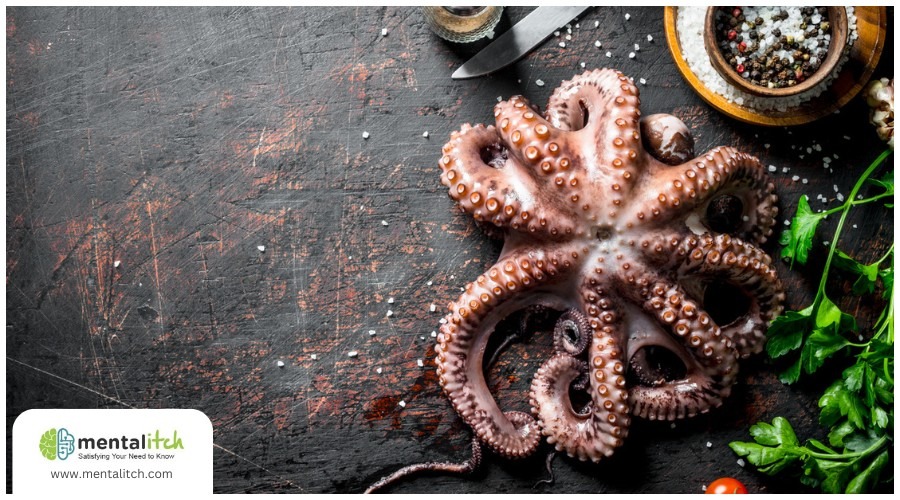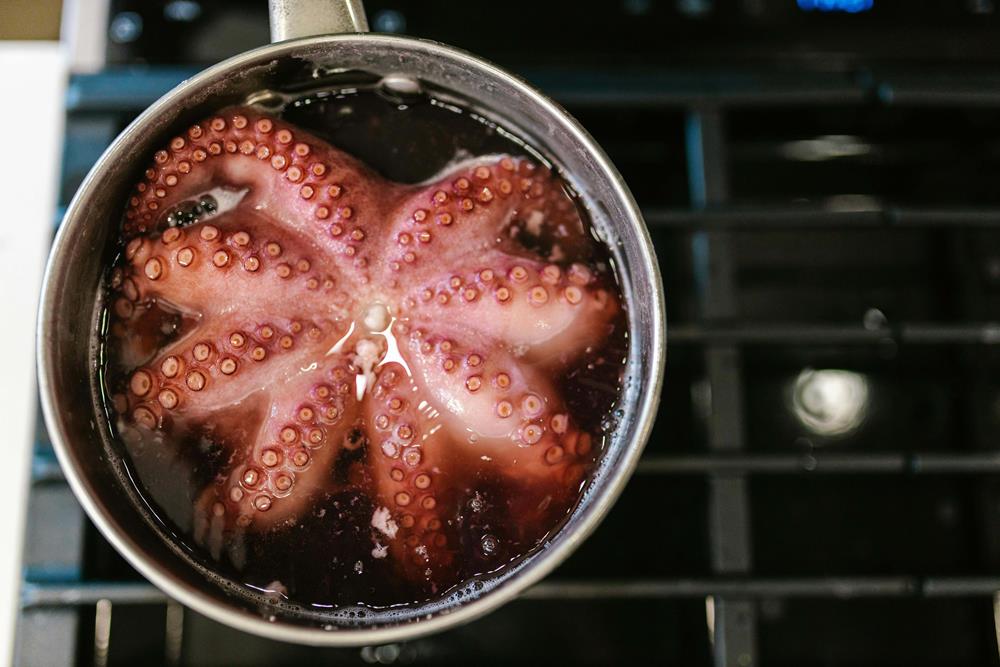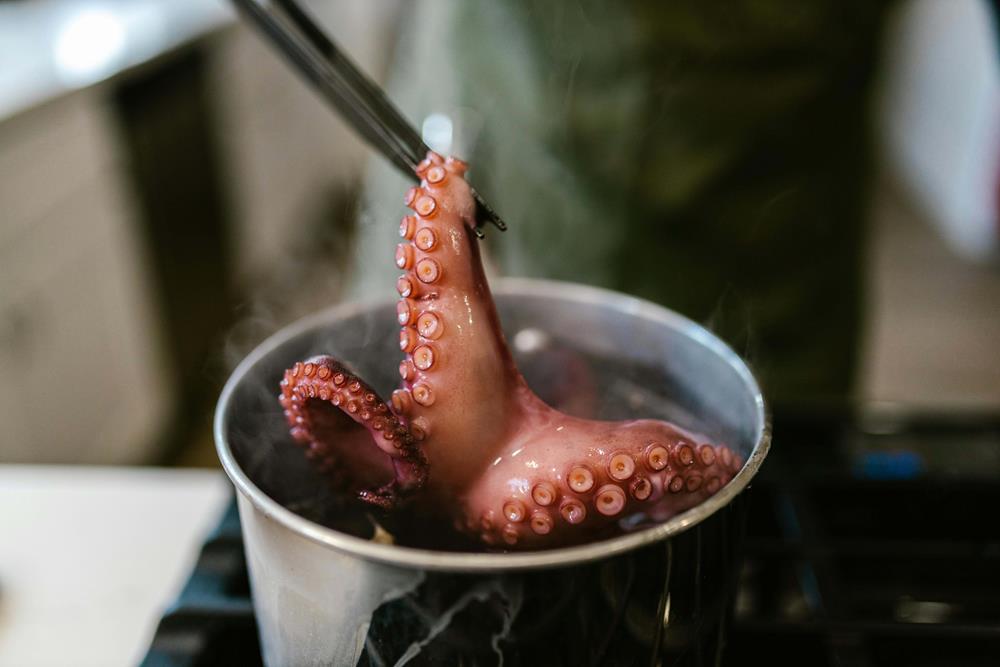Octopus, the eight-armed enigma of the sea, has captivated imaginations for centuries. Its intelligence, adaptability, and even mischievous nature have earned it a place in myths and legends. But beyond its fascinating biology lies a culinary treasure trove waiting to be unlocked.
While the price of octopus can vary depending on species and size, its affordability compared to other seafood makes it an even more enticing prospect. This guide will equip you with the knowledge and techniques to navigate the world of octopus preparation, from selecting the perfect specimen to crafting a dish that will tantalize your taste buds.
Choosing the Perfect Octopus
Your journey begins at the fishmonger’s. The two most common octopus varieties you’ll encounter are the common octopus (Octopus vulgaris) and the red octopus (Octopus rubescens). Both offer excellent flavor and texture, but slight differences exist.
The common octopus tends to be slightly larger and meatier, while the red octopus boasts a sweeter, more delicate taste. Whichever you choose, ensure the eyes are clear and bright, the skin is firm and moist, and there’s no unpleasant ammonia smell.
Size Matters: The Mighty Mini or the Majestic Mega-Cephalopod?
Baby octopuses are a delightful delicacy. Their tender flesh requires minimal preparation and cooks quickly, making them ideal for quick stir-fries or crudo dishes. On the other hand, more giant octopuses demand more patience and technique. Their muscular flesh benefits from slow-cooking methods like braising or stewing, making it melt-in-your-mouth tender.
Essential Octopus Preparation Techniques
Conquering the seemingly daunting task of preparing an octopus is understanding its unique anatomy. The key lies in tenderizing the collagen-rich flesh, transforming it from rubbery to toothsome. Here are some essential techniques:
- Salting: A classic method, salting draws out moisture and tenderizes the flesh. Simply rub coarse salt onto the octopus and let it rest for at least 30 minutes or overnight for larger specimens. Rinse thoroughly before cooking.
- Velveting: This Chinese technique involves coating the octopus in cornstarch and baking soda, then briefly blanching it in hot water. This creates a velvety texture and locks in moisture.
- Slow-Cooking: Braising, stewing, and slow-roasting are gentle methods that break down the collagen, resulting in a fall-apart-tender octopus. Marinades infused with acidic ingredients like lemon juice or wine can further enhance the flavor and tenderness.
Unleashing the Flavor Potential of Octopus
With its mild, slightly briny flavor, octopus is a blank canvas for many culinary creations. Here are some inspiring ideas to get your creative juices flowing:
- Mediterranean Inspiration: Grilled octopus tentacles drizzled with olive oil, lemon juice, and fresh herbs are a summer staple in Greece and beyond. Pair them with grilled vegetables and a tangy salad for a complete meal.
- Asian Adventure: Octopus takoyaki, bite-sized balls of fried dough filled with tender octopus chunks, are a popular Japanese street food. Try stir-frying octopus with ginger, garlic, and your favorite vegetables for a home-cooked twist.
- Spanish Sizzle: Galician-style octopus à la plancha, seared on a hot griddle until lightly charred, is a simple yet stunning dish. Serve it with paprika-infused potatoes and garlicky aioli for an authentic Spanish experience.
Other Tips to Keep in Mind When Preparing Octopus
Cooking octopus can seem intimidating, but with the right tips, you can prepare it easily and deliciously. Here are some additional tips to help you master octopus preparation.
Tenderize with Natural Ingredients
Using natural ingredients to tenderize octopus can be effective. For example, marinating the octopus in vinegar or lemon juice for a few hours can help break down the tough fibers. This method adds a slight tanginess and helps in achieving a tender texture.
Another way to tenderize octopus is by using salt. Coat the octopus with coarse sea salt and let it sit for about 30 minutes before rinsing it off. This process helps to soften the meat and remove some of the slimy texture.
Use a Slow Cooking Method
Slow cooking is a great way to achieve a tender and flavorful octopus. You can simmer it gently in water with aromatics like bay leaves, garlic, and onion for about 1-2 hours. The slow cooking process allows the octopus to cook evenly and absorb the flavors of the aromatics.
Another slow cooking method is braising. Place the octopus in a pot with wine, tomatoes, and herbs, then cover and cook it slowly in the oven at a low temperature. This method not only tenderizes the octopus but also infuses it with rich flavors.
Grill for a Smoky Flavor
Grilling octopus can add a delicious smoky flavor and crispy texture. After boiling or braising, finish the octopus on a hot grill for a few minutes on each side. This method caramelizes the surface that adds a charred and flavorful crust.
When grilling, brush the octopus with olive oil and season it with salt and pepper. You can also add herbs and spices to enhance the taste. The grilling process is quick and easy, so it is the perfect option for a summer meal.
Try Different Marinades
Experimenting with different marinades can bring out various flavors in your octopus. A simple marinade of olive oil, garlic, lemon juice, and herbs can add a fresh and zesty taste. Let the octopus marinate for at least an hour before cooking.
Another marinade option is a mixture of soy sauce, ginger, and sesame oil. This combination gives the octopus an Asian-inspired flavor. Marinades add taste while also helping to tenderize the meat and make it more succulent.
Interesting Facts About Cooking Octopus
The art of cooking octopus has a rich history and some fascinating facts. Here are some that you might find intriguing.
- High Protein Content: Octopus is a great source of protein. A 3-ounce serving contains about 25 grams of protein, making it a healthy choice for those looking to increase their protein intake.
- Low in Calories: Despite being rich in protein, octopus is low in calories. A 3-ounce serving has only about 140 calories, making it a good option for those watching their calorie intake.
- Rich in Vitamins and Minerals: Octopus is packed with essential vitamins and minerals. It is a good source of vitamin B12, iron, and selenium, which are important for overall health.
- Popular in Mediterranean Cuisine: Octopus is a staple in Mediterranean cuisine. Countries like Greece, Spain, and Italy have numerous traditional recipes that highlight the unique flavor and texture of octopus.
- Sustainable Seafood Choice: Octopus can be a sustainable seafood option when sourced responsibly. Some species of octopus reproduce quickly, making them less vulnerable to overfishing compared to other marine life.
- Various Cooking Methods: Octopus can be cooked in many ways, including boiling, grilling, braising, and frying. Each method offers a different texture and flavor, providing versatility in cooking.
- Long Cooking Time: To achieve tenderness, octopus often requires a long cooking time. Simmering it gently for 1-2 hours can help break down the tough fibers and make it more palatable.
- Used in Traditional Dishes Worldwide: Many cultures have traditional dishes featuring octopus. From Japanese takoyaki to Spanish pulpo a la gallega, octopus is enjoyed in various forms around the world.
Conclusion
Preparing for octopus may seem daunting initially, but with some knowledge and practice, you can unlock a world of culinary possibilities. So, embrace the challenge, grab your freshest catch, and savor the journey into the depths of octopus preparation.
Additional Suggestions
- The price of octopus can be different for every region, and it would also depend on the octopus’s size. If you want to get the best octopus for your recipe or dish, you may need to shell out a little bit more instead of settling for a smaller and lower quality octopus.



